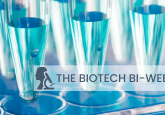The cell-culture sleuth: how to detect mycoplasmas in the laboratory

After a microbiology-filled academic and research career, Diana Patzelt became the Global Project Manager for Microbial Enumeration Products at Sartorius (Göttingen, Germany), earning her the title of the ‘cell-culture sleuth’. She and her team work together to develop cutting-edge technologies to help scientists overcome microbial maladies in their research. One type of microbe, mycoplasma, has proven particularly pesky in cell-culture studies, contaminating labs and cultures and affecting resultant data.
In this interview with Diana, we get introduced to mycoplasma and learn about its many different sources, its impact on cell cultures and the solutions available for its detection.
What are mycoplasmas?
Mycoplasmas are small, prokaryotic organisms and the most common contaminants found in cell cultures. Contamination by mycoplasma continues to be a major issue in cell culture as it can cause drastic changes in cell metabolism. The primary difference between mycoplasma and other bacteria is their lack of cell wall and their flexible membrane. Mycoplasmas are typically 0.15-0.3µm in size; therefore, they can easily escape filtering systems. These organisms are also resistant to most antibiotics commonly employed in cell cultures.
What are the sources of mycoplasma contamination?
One of the main sources of mycoplasma contamination is infected cultures obtained from other research laboratories. Additionally, cell-culture media and animal products used in cell culture can be a source of mycoplasma contamination. Due to their small size and flexibility, mycoplasmas can pass through the filter membranes used in sterilizing cell-culture media, sera and other reagents. Laboratory personnel can also be sources of mycoplasma contamination, as a single sneeze or talking can infect nearby cell cultures.
Why is mycoplasma testing required?
Testing is required to detect the presence of mycoplasma contamination in biopharmaceutical laboratories. In cell laboratories, the majority of mycoplasma infections in continuous cell lines are caused by only a few species, originating from bovine, swine and humans. These microbial agents easily propagate from one infected cell-culture batch to another via aerosol transmission or inadequate aseptic techniques. If undetected, mycoplasma contamination can have significant effects on the quality and reliability of your cell-culture preparations. Regular mycoplasma testing and control procedures help avoid the costly consequences of cell-culture contamination, ensuring safe biopharmaceuticals and reliable scientific results.
Which methods are most suitable for mycoplasma detection?
The availability of accurate, sensitive and reliable detection methods and the application of robust and successful elimination methods provide powerful means for overcoming the problem of mycoplasma contamination in cell cultures. A vast array of techniques have been developed to detect mycoplasma contamination in all kinds of samples, all of them offering advantages and drawbacks that depend on the sample type. Most of these methods can be quite time consuming, involve subjective assessments and use measurements that often can be quite complex in nature. I would like to highlight that, in my opinion, the most flexible, reliable, accurate and fast detection method available is PCR.
What are the advantages of PCR?
PCR-based techniques target the genetics of microorganisms, rather than their phenotypic or metabolic characteristics. They are constantly evolving and hence can infect lots of products, specifically non-filterable, small-volume and short-shelf-life products. Coupled to a sample-specific preparation and DNA/RNA extraction protocol, nucleic acid amplification technologies deliver fast, specific and sensitive results, allowing for a broad-detection range – even detecting intracellular or dormant mycoplasma contamination that might go undetected in growth-based methods.
PCR has also been shown to have very high specificity and generally requires fewer repeat tests than most other rapid methods, leading to further time saving. PCR systems are flexible, allowing for several pathogens to be assayed in a single run (multiplex PCR). Real-time PCR assays can also be quantitative without adding additional stages or operations to the assay. For PCR-based mycoplasma-detection assays, regulatory agencies require validation studies to confirm the sensitivity, specificity and robustness of the test method to meet their standards.
Which PCR-based mycoplasma-detecting solutions does Sartorius offer?
Sartorius provides validated real-time PCR-based mycoplasma detection kits for testing in pharmaceutical quality-control processes. They also provide solutions for even more rapid and cost-effective in-process testing for research and development efforts. The specifically designed mycoplasma DNA extraction followed by a subsequent Taq-Man multiplex PCR assay detects mycoplasma contamination within 3 hours with a sensitivity of below 10 cfu/mL for all pharmaceutical-relevant species. It rules out false negative and false positive results due to in-built extraction and PCR reaction controls. Additionally, lyophilized reagents ease storage and enhance reagent stability while color-coded tubes assist in streamlining the testing workflow.
Reach out to our PCR experts at [email protected] for any support!






